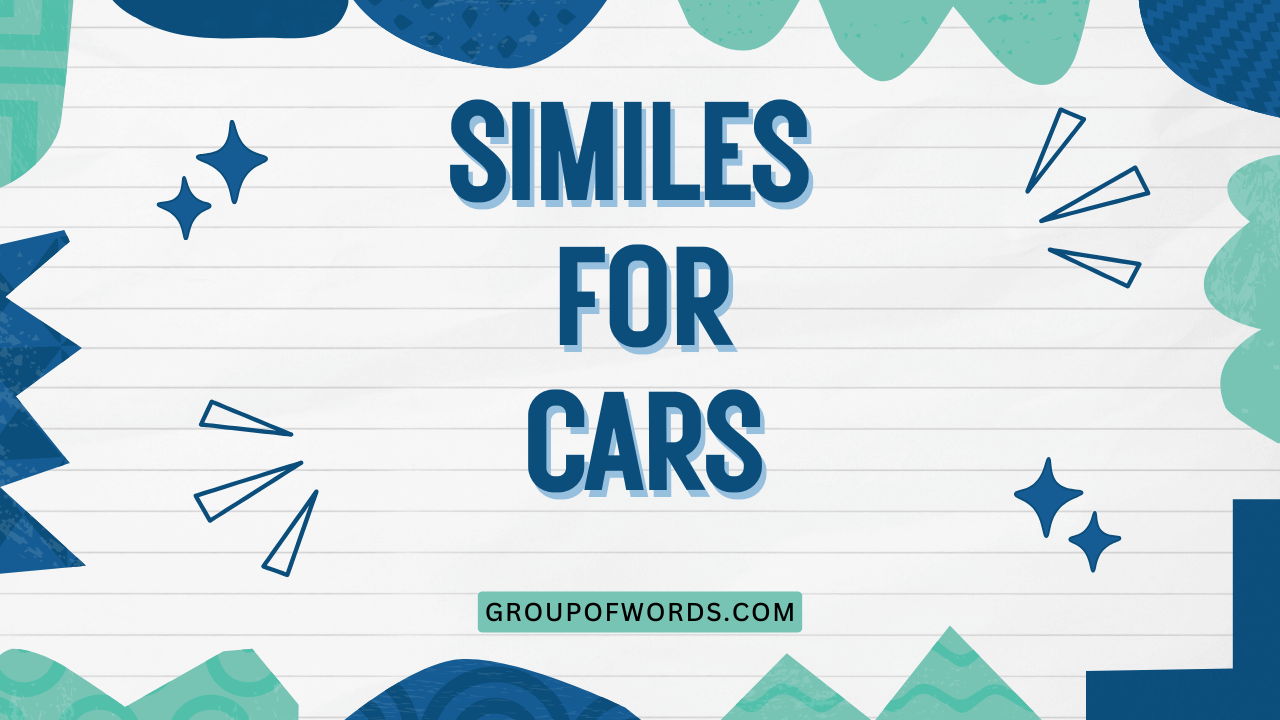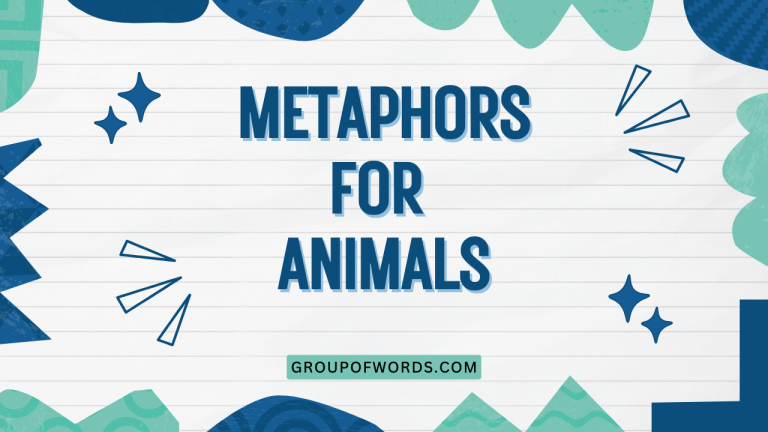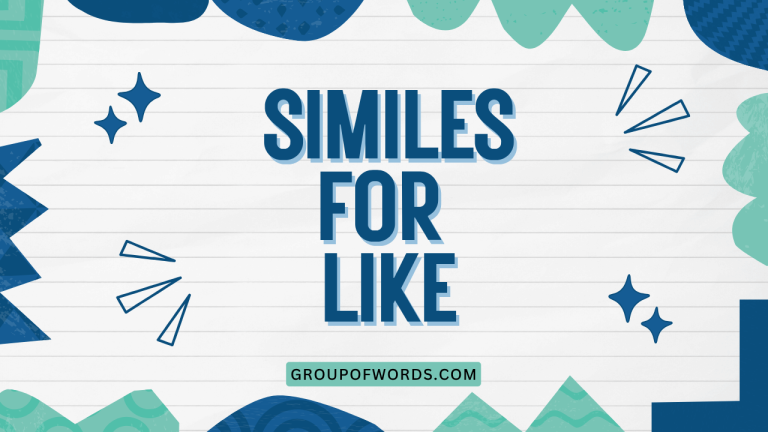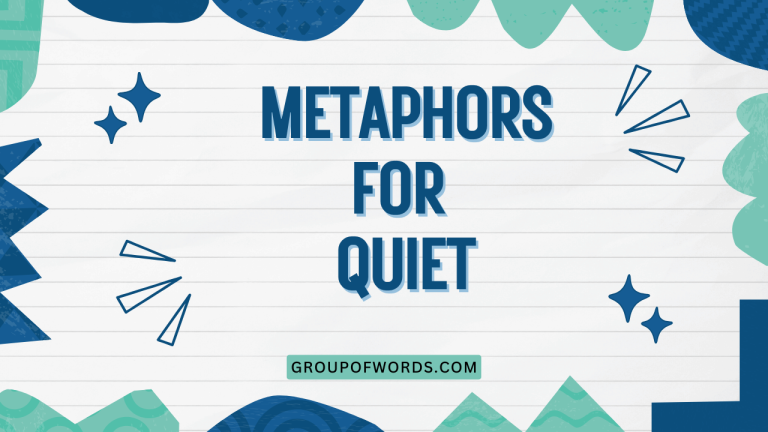Similes for Cars: Enhancing Your Descriptions with Comparisons
Similes are powerful tools in the English language, allowing us to paint vivid pictures and create impactful imagery through comparison. Understanding and using similes effectively can significantly enhance your writing and speaking skills.
This article focuses specifically on similes used to describe cars, exploring their structure, function, and various examples. Whether you are a student, a writer, or simply someone looking to improve your communication skills, this comprehensive guide will provide you with the knowledge and practice you need to master the art of using similes to describe cars.
By the end of this guide, you’ll be able to identify, construct, and use similes effectively, adding depth and color to your descriptions of vehicles. We’ll cover everything from basic definitions to advanced techniques, ensuring a thorough understanding of this essential grammatical concept.
Table of Contents
- Definition of Similes
- Structural Breakdown of Similes
- Types of Car Similes
- Examples of Similes for Cars
- Usage Rules for Similes
- Common Mistakes with Similes
- Practice Exercises
- Advanced Topics in Similes
- Frequently Asked Questions
- Conclusion
Definition of Similes
A simile is a figure of speech that compares two unlike things using the words “like” or “as.” The purpose of a simile is to create a vivid image or to emphasize a particular quality of one of the things being compared. Similes add color and depth to language, making it more engaging and memorable.
In essence, a simile draws a parallel between two distinct entities, highlighting a shared characteristic or attribute. This comparison helps the audience understand the subject more clearly and appreciate its qualities in a new light.
Classification of Similes
Similes fall under the broader category of figurative language, which includes metaphors, personification, and other literary devices. They are specifically classified as *comparative* figures of speech because they explicitly state the comparison using “like” or “as.” This distinguishes them from metaphors, which imply the comparison without using these words.
Function of Similes
The primary function of a simile is to enhance description. By comparing something to something else, similes can make abstract concepts more concrete, and ordinary objects more interesting.
They can also be used to evoke emotions and create a specific tone or mood in writing.
Contexts for Using Similes
Similes are versatile and can be used in various contexts, including:
- Literature: To enrich descriptions and create vivid imagery.
- Poetry: To add depth and emotional resonance.
- Everyday conversation: To make communication more engaging and expressive.
- Advertising: To highlight the features and benefits of products.
- Technical writing: To simplify complex concepts by relating them to familiar ideas.
Structural Breakdown of Similes
A simile typically consists of three main components: the subject, the comparative word (“like” or “as”), and the object of comparison. Understanding these components is crucial for constructing effective and meaningful similes.
The Subject
The subject is the thing being described or compared. In the context of this article, the subject will usually be a car or a specific aspect of a car (e.g., its speed, color, or engine).
The Comparative Word
The comparative word is either “like” or “as.” These words explicitly indicate that a comparison is being made. The choice between “like” and “as” is often a matter of style or preference, but both serve the same fundamental purpose.
The Object of Comparison
The object of comparison is the thing that the subject is being compared to. This object should share a relevant characteristic with the subject, allowing the simile to create a meaningful and insightful comparison.
Formula: Subject + comparative word (“like” or “as”) + object of comparison
Example: The car is as fast as a rocket.
- Subject: The car
- Comparative word: as
- Object of comparison: a rocket
Types of Car Similes
Similes for cars can be categorized based on the aspect of the car being described. Here are some common types:
Speed Similes
These similes compare the car’s speed to something known for its swiftness. Examples include comparing a car to a cheetah, a bullet, or a rocket.
Appearance Similes
These similes focus on the car’s visual attributes, such as its color, shape, or overall aesthetic. Examples include comparing a car’s paint to polished obsidian or its sleek design to a predator.
Sound Similes
These similes describe the sounds a car makes, such as the engine’s roar or the tires screeching. Examples include comparing the engine to a lion’s roar or the tires to a screaming banshee.
Performance Similes
These similes highlight the car’s handling, power, or reliability. Examples include comparing the car’s grip on the road to a spider’s hold or its engine’s power to a charging bull.
Comfort Similes
These similes describe the car’s interior and the overall comfort it provides. Examples include comparing the seats to plush clouds or the ride to gliding on air.
Examples of Similes for Cars
The following tables provide extensive examples of similes for cars, categorized by the aspect of the car being described. Each example is designed to illustrate the principles discussed in the previous sections.
Speed Similes Examples
The table below lists similes that describe the speed of a car. These similes use objects and concepts that are commonly associated with speed and swiftness.
| Simile | Explanation |
|---|---|
| The car is as fast as a cheetah. | Compares the car’s speed to the fastest land animal. |
| It went by like a bullet. | Compares the car’s speed to a projectile fired from a gun. |
| The car moved like a rocket taking off. | Compares the car’s acceleration to the rapid ascent of a rocket. |
| It’s as quick as lightning. | Compares the car’s speed to the sudden flash of lightning. |
| The car is as swift as the wind. | Compares the car’s speed to the movement of the wind. |
| It accelerates like a shot. | Compares the car’s acceleration to being fired from something. |
| The car is as nimble as a racehorse. | Compares the car’s agility and speed to a racehorse. |
| It flew by like a jet plane. | Compares the car’s speed to the fast-moving jet. |
| The car is as rapid as a peregrine falcon diving. | Compares the car’s speed to the fastest bird. |
| It’s as speedy as a courier on a mission. | Compares the car’s speed to someone on a fast-paced mission. |
| The car is as brisk as a winter wind. | Highlights the sudden and intense speed. |
| It zipped by like a hummingbird. | Compares the car’s quickness to a hummingbird’s flight. |
| The car is as fleet as a deer. | Compares the car’s speed and grace to a deer. |
| It surged forward like a torpedo. | Compares the car’s acceleration to a torpedo’s underwater speed. |
| The car is as prompt as an ambulance. | Compares the car’s speed to the urgency of an ambulance. |
| It dashed off like a sprinter. | Compares the car’s speed to a sprinter’s burst of speed. |
| The car is as express as a high-speed train. | Compares the car’s speed to a train designed for speed. |
| It darted away like an arrow. | Compares the car’s swiftness to an arrow’s trajectory. |
| The car is as quick as a hiccup. | Compares the car’s sudden burst of speed to a hiccup. |
| It zoomed past like a comet. | Compares the car’s speed to a comet streaking across the sky. |
Appearance Similes Examples
Here are some similes that describe the appearance of a car. These similes focus on color, shape, and overall aesthetic appeal.
| Simile | Explanation |
|---|---|
| The car’s paint gleamed like polished obsidian. | Compares the car’s shiny black paint to a volcanic glass. |
| It looked as sleek as a predator. | Compares the car’s design to the streamlined form of a predatory animal. |
| The car shone like a new penny. | Compares the car’s shine to a freshly minted coin. |
| It was as bright as a summer sky. | Compares the car’s color to a clear blue sky. |
| The car stood out like a jewel in a crown. | Compares the car’s beauty to a precious gem. |
| It was as pristine as a freshly fallen snow. | Compares the car’s cleanliness and purity to new snow. |
| The car’s chrome sparkled like diamonds. | Compares the car’s chrome trim to the brilliance of diamonds. |
| It looked as elegant as a swan. | Compares the car’s gracefulness to a swan. |
| The car was as vibrant as a field of wildflowers. | Compares the car’s color to a colorful meadow. |
| It was as imposing as a fortress. | Compares the car’s size and presence to a strong fortification. |
| The car’s finish was as smooth as glass. | Compares the car’s paint finish to the smoothness of glass. |
| It looked as futuristic as a spaceship. | Compares the car’s design to something from the future. |
| The car was as radiant as the sun. | Compares the car’s brightness to the sun. |
| It was as rugged as a mountain. | Compares the car’s durability to a mountain. |
| The car was as classic as a vintage film. | Compares the car’s timeless appeal to a classic movie. |
| It looked as modern as a smartphone. | Compares the car’s design to contemporary technology. |
| The car was as fiery as a sunset. | Compares the car’s color to a vibrant sunset. |
| It was as sleek as a dolphin. | Compares the car’s design to a streamlined animal. |
| The car was as refined as a luxury watch. | Compares the car’s design to something luxurious. |
| It was as bold as a graffiti mural. | Compares the car’s design to something eye-catching. |
| The car was as sharp as a knife. | Compares the car’s design to something precise. |
| It shimmered like a mirage. | Compares the car’s appearance to something illusory. |
Sound Similes Examples
The table below provides similes that describe the sounds a car makes, such as the engine’s roar or the tires screeching.
| Simile | Explanation |
|---|---|
| The engine roared like a lion. | Compares the engine’s loud sound to the roar of a lion. |
| The tires screeched like a banshee. | Compares the sound of the tires to a ghostly wail. |
| The car purred like a kitten. | Compares the engine’s quiet sound to a cat’s purr. |
| It rumbled like distant thunder. | Compares the car’s sound to the low rumble of thunder. |
| The exhaust coughed like an old man. | Compares the exhaust sound to an old man’s cough. |
| It hummed like a swarm of bees. | Compares the engine’s constant sound to bees. |
| The car whistled like a kettle. | Compares a sound from the car to a kettle. |
| It ticked like a clock. | Compares a sound from the car to a clock. |
| The engine clicked like castanets. | Compares a sound from the engine to an instrument. |
| It sputtered like a wet firecracker. | Compares the car’s sound to a sputtering firecracker. |
| The car whispered like a secret. | Compares the quiet engine to a whisper. |
| It growled like a dog. | Compares the engine to a dog. |
| The horn blared like a trumpet. | Compares the horn to a trumpet. |
| It shrieked like a frightened bird. | Compares the sound of the car to a bird. |
| The engine chugged like a locomotive. | Compares the engine to a locomotive. |
| It clattered like falling rocks. | Compares a sound from the car to rocks. |
| The car sighed like a tired giant. | Compares a sound from the car to a giant. |
| It pinged like a sonar. | Compares a sound from the car to sonar. |
| The car squealed like a pig. | Compares a sound from the car to a pig. |
| It knocked like a woodpecker. | Compares a sound from the car to a woodpecker. |
Performance Similes Examples
The following table provides similes that describe the car’s performance, including handling, power, and reliability.
| Simile | Explanation |
|---|---|
| The car gripped the road like a spider. | Compares the car’s traction to a spider’s grip. |
| Its engine had the power of a charging bull. | Compares the engine’s strength to a bull’s power. |
| The car handled like a dream. | Compares the car’s handling to a pleasant experience. |
| It responded as reliably as sunrise. | Compares the car’s reliability to a predictable event. |
| The brakes stopped the car like hitting a wall. | Compares the car’s braking power to a sudden stop. |
| It climbed hills like a mountain goat. | Compares the car’s climbing ability to an agile animal. |
| The car maneuvered like a snake. | Compares the car’s maneuverability to a snake’s movements. |
| It accelerated like a slingshot. | Compares the car’s acceleration to a slingshot. |
| The car cornered like a race car. | Compares the car’s cornering ability to a race car. |
| It performed as smoothly as silk. | Compares the car’s performance to silk. |
| The car held its ground like a tank. | Compares the car’s stability to a tank. |
| It revved up like a chainsaw. | Compares the car’s engine to a chainsaw. |
| The car turned on a dime. | Compares the car’s turning to a coin. |
| It shifted gears like clockwork. | Compares the car’s gears to clockwork. |
| The car plowed through snow like a snowplow. | Compares the car’s ability to navigate snow to a snowplow. |
| It floated over bumps like a cloud. | Compares the smoothness of the car’s ride to a cloud. |
| The car stuck to the road like glue. | Compares the car’s traction to glue. |
| It conquered the terrain like a champion. | Compares the car’s performance to a champion. |
| The car sailed through traffic like a fish. | Compares the car’s performance in traffic to a fish. |
| It conquered the terrain like a champion. | Compares the car’s ability to handle terrain to a champion. |
Comfort Similes Examples
Here are some similes that describe the car’s interior and the overall comfort it provides.
| Simile | Explanation |
|---|---|
| The seats were like plush clouds. | Compares the seats’ comfort to soft clouds. |
| The ride was like gliding on air. | Compares the car’s ride to floating. |
| The interior felt as luxurious as a palace. | Compares the car’s interior to a palace. |
| It was as quiet as a library inside. | Compares the car’s interior to a library. |
| The car was as cozy as a living room. | Compares the car’s interior to a living room. |
| It felt as secure as a vault. | Compares the car’s interior to a vault. |
| The car was as comfortable as your favorite armchair. | Compares car’s comfort to an armchair. |
| It was as relaxing as a day at the spa. | Compares car’s comfort to a spa. |
| The car was as spacious as a ballroom. | Compares car’s space to a ballroom. |
| It felt as inviting as a warm fireplace. | Compares the car’s interior to a fireplace. |
| The car was as smooth as a lullaby. | Compares the ride to a lullaby. |
| It was as pleasant as a summer breeze. | Compares the car’s interior to a summer breeze. |
| The car was as serene as a temple. | Compares the car’s interior to a temple. |
| It felt as pampered as royalty. | Compares the car’s interior to royalty. |
| The car was as plush as a velvet cushion. | Compares car’s comfort to a velvet cushion. |
| It was as peaceful as a sleeping baby. | Compares the car’s interior to a sleeping baby. |
| The car was as welcoming as a hug. | Compares car’s comfort to a hug. |
| It felt as carefree as a child’s laughter. | Compares the car’s interior to a child’s laughter. |
| The car was as gentle as a feather. | Compares car’s ride to a feather. |
| It was as rejuvenating as a vacation. | Compares the car’s interior to a vacation. |
Usage Rules for Similes
Using similes effectively requires adherence to certain rules. These rules ensure that the similes are clear, meaningful, and appropriate for the context.
Clarity
The comparison should be easily understood. The object of comparison should be familiar to the audience, and the shared characteristic should be obvious.
Relevance
The comparison should be relevant to the subject being described. There should be a clear connection between the subject and the object of comparison.
Originality
While clichés can be effective, strive for originality. Unique and creative similes can make your writing more engaging and memorable.
Appropriateness
The simile should be appropriate for the tone and context of the writing. Avoid using similes that are too informal, offensive, or confusing.
Consistency
Maintain consistency in your use of similes. Avoid mixing similes that create conflicting images or ideas.
Common Mistakes with Similes
Even experienced writers can make mistakes when using similes. Here are some common errors to avoid:
Mixing Metaphors and Similes
Confusing metaphors and similes is a common mistake. Remember that similes use “like” or “as,” while metaphors imply a comparison without these words.
Incorrect: The car was a rocket, like a cheetah.
Correct: The car was like a rocket.
Correct: The car was as fast as a cheetah.
Using Clichés
Overusing clichés can make your writing sound unoriginal and uninspired. Try to come up with fresh and creative comparisons.
Cliché: The car was as fast as lightning.
Better: The car accelerated like a spaceship reaching warp speed.
Inconsistent Comparisons
Avoid comparing things that don’t logically connect.
Incorrect: The car was as loud as a flower.
Correct: The car was as loud as a jet engine.
Overusing Similes
Using too many similes in a short space can make your writing feel cluttered and distracting. Use similes sparingly and strategically.
Practice Exercises
These exercises will help you practice identifying and constructing similes for cars. Each exercise focuses on a different aspect of simile usage.
Exercise 1: Identifying Similes
Identify the similes in the following sentences.
| Question | Answer |
|---|---|
| 1. The car’s paint shone like a mirror. | like a mirror |
| 2. It moved as gracefully as a dancer. | as gracefully as a dancer |
| 3. The engine purred, a gentle lullaby. | (no simile) |
| 4. The car was as reliable as sunrise. | as reliable as sunrise |
| 5. The breaks were as hard as stone. | as hard as stone |
| 6. It sounded like a roaring lion. | like a roaring lion |
| 7. The car’s interior was a sanctuary of calm. | (no simile) |
| 8. He drove the car like a maniac. | like a maniac |
| 9. The car was as orange as a pumpkin. | as orange as a pumpkin |
| 10. The car was gleaming, a testament to its owner’s care. | (no simile) |
Exercise 2: Completing Similes
Complete the following similes with appropriate objects of comparison.
| Question | Answer |
|---|---|
| 1. The car was as fast as a _____. | rocket/bullet |
| 2. The seats were as comfortable as _____. | clouds/pillows |
| 3. The engine sounded like a _____. | lion/thunder |
| 4. The car shone like a _____. | star/diamond |
| 5. It handled as smoothly as _____. | silk/butter |
| 6. The car was as red as a _____. | rose/fire truck |
| 7. The brakes were as responsive as _____. | a cat/alarm |
| 8. The car was as quiet as _____. | a library/whisper |
| 9. The car was as big as _____. | a boat/house |
| 10. It moves as quickly as _____. | lightning/the wind |
Exercise 3: Creating Similes
Create similes to describe the following aspects of a car.
| Aspect of Car | Example Simile |
|---|---|
| 1. The car’s acceleration | The car accelerated like a rocket taking off. |
| 2. The car’s color | The car’s paint shimmered like a summer sky. |
| 3. The car’s sound | The engine purred like a contented cat. |
| 4. The car’s handling | The car handled like a seasoned race car. |
| 5. The car’s comfort | The seats were as soft as sinking into a cloud. |
| 6. The car’s look | The car looked as fierce as a predator. |
| 7. The car’s brakes | The brakes stopped the car like hitting a brick wall. |
| 8. The car’s engine | The car’s engine ticked like a clock. |
| 9. The car’s tires | The tires gripped the road like a spider. |
| 10. The car’s ride | The ride was as smooth as gliding on air. |
Advanced Topics in Similes
For advanced learners, exploring more complex aspects of similes can further enhance their writing skills.
Extended Similes
An extended simile is a simile that is developed over several lines or sentences. It provides a more detailed and nuanced comparison, allowing for a richer and more immersive experience for the reader.
Example: “The car, like a predator stalking its prey, moved silently through the night, its headlights cutting through the darkness like the eyes of a hunter, its engine a low growl that promised swift and decisive action.”
Implied Similes
An implied simile is a simile in which either the subject or the object of comparison is not explicitly stated. This can create a more subtle and suggestive comparison, requiring the reader to infer the connection.
Example: “The car’s speed, a blur of motion against the landscape.” (Implies the car’s speed is like something very fast, such as a bullet or a rocket.)
Frequently Asked Questions
Here are some frequently asked questions about similes:
- What is the difference between a simile and a metaphor?
A simile compares two unlike things using “like” or “as,” while a metaphor implies the comparison without using these words. For example, “The car is like a rocket” is a simile, while “The car is a rocket” is a metaphor.
- Can a simile be a cliché?
Yes, a simile can be a cliché if it is overused and unoriginal. To avoid clichés, try to come up with fresh and creative comparisons.
- How can I make my similes more effective?
To make your similes more effective, focus on clarity, relevance, originality, and appropriateness. Choose objects of comparison that are familiar to your audience and that share a clear connection with the subject you are describing.
- Is it okay to use similes in formal writing?
Yes, similes can be used in formal writing, but they should be used sparingly and strategically. Make sure that the similes are appropriate for the tone and context of the writing.
- Can I use similes in technical writing?
Yes, similes can be used in technical writing to simplify complex concepts by relating them to familiar ideas. However, it is important to ensure that the similes are clear and accurate.
- How do I avoid overusing similes?
To avoid overusing similes, use them sparingly and strategically. Focus on using similes only when they can add significant value to your writing.
- What makes a good simile?
A good simile is clear, relevant, original, and appropriate for the context. It creates a vivid image or emphasizes a particular quality of the subject being described.
- Can a simile be humorous?
Yes, similes can be humorous if they create an unexpected or absurd comparison. However, it is important to use humor appropriately and to avoid being offensive.
Conclusion
Mastering the use of similes can significantly enhance your ability to describe cars and other subjects with vividness and precision. By understanding the structure, function, and usage rules of similes, you can add depth and color to your writing and speaking.
Remember to focus on clarity, relevance, originality, and appropriateness when constructing similes, and avoid common mistakes such as mixing metaphors and similes or using clichés.
Continue practicing and experimenting with similes to develop your skills. The more you use similes, the more natural and effective they will become.
With practice, you’ll be able to craft compelling descriptions that captivate your audience and bring your writing to life. Keep exploring the nuances of language, and your communication skills will continue to grow.






